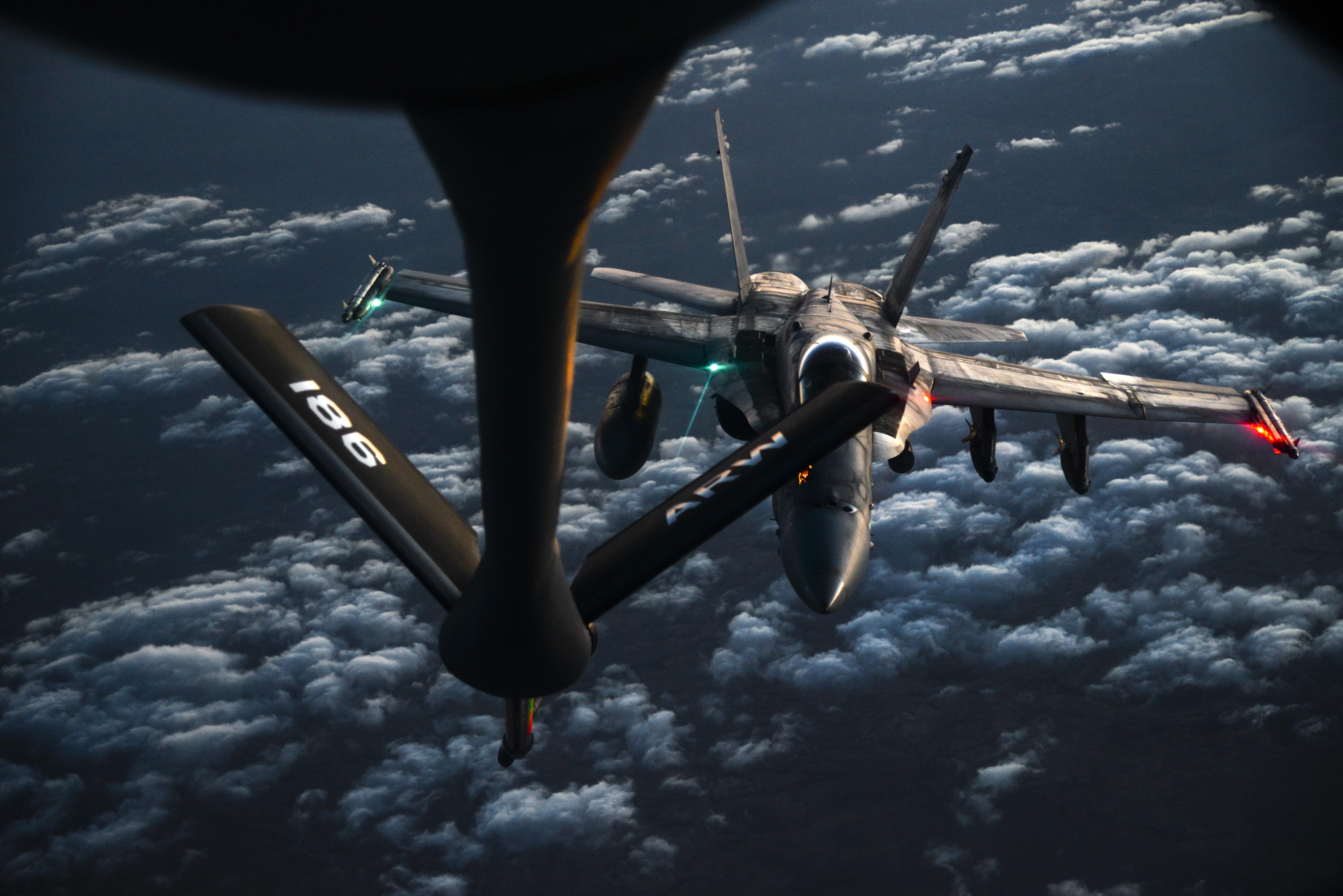Must Go Faster, Wilson Says
In one of her first speeches since becoming Air Force Secretary, Heather Wilson said she wants to speed up acquisition, bringing on more people and restoring readiness to an Air Force that is older and smaller than ever. Wilson reiterated the service’s top priorities as the F-35 fighter, KC-46 tanker, and B-21 bomber, alongside boosting the number of fighter pilots as near-term priorities, though she is awaiting the results of various strategy reviews to make firm plans about force sizing and content. Read the full story by John A. Tirpak.
Meeting the Massive Demand for Refueling and Airlift in the Middle East
Mobility crews deployed to US Central Command have several missions to support, with an endless supply of thirsty aircraft requiring air refueling. It all takes delicate planning to ensure enough tankers and airlifters are ready. Read Brian Everstine’s full report from Southwest Asia.
Targeted Aviation Bonus Aimed At Curbing Pilot Exodus
The Air Force is moving to a tiered pilot bonus system that will pay fighter pilots more because they are in greater demand. The service is also adding more flexibility and options when pilots of various specialties sign up for additional contract lengths. Read the full story by John A. Tirpak.
Lost Data Link Caused March 2016 Predator Crash
A lost data link and a crew’s misperception of a Predator’s flight control settings caused the drone to crash March 8, 2016, in the Middle East. The Predator, operated by the 15th Attack Squadron at Creech AFB, Nev., was flying a combat support mission when the aircraft experienced a “rack lock up” and no return datalink, according to Air Combat Command. Software and communication “anomalies” prevented the aircrew from being able to control the aircraft. After going through a checklist procedure, the crew regained control of the aircraft but there were no “discernible indications at the ground control station that the data link had been reestablished,” according to ACC. Because of that, the crew could did not control the aircraft to sustain flight, and the aircraft impacted the ground. An Air Force Accident Investigation Board report, released on Monday, found “unclear guidance on emergency procedures and checklists” contributed to the crash. The MQ-1 and its munitions were destroyed, at a loss of about $4.2 million.
US Confirms 16 Coalition Strikes Caused 132 Civilian Casualties
The US-led coalition against ISIS in April finished the investigation of 43 claims of civilian casualties in coalition strikes, finding that 132 civilians were killed in 16 of the strikes. Thirty-one of the claims were found to be not credible, and an additional 38 reports are still open and being assessed, US Central Command said in a statement. Twelve of the 16 credible strikes happened in Mosul as Iraqi forces pushed into the western half of the city. This includes a March 17 strike were 101 civilians where unintentionally killed when a bomb hit a building, igniting ISIS-planted explosives. The confirmed strikes occurred between Jan. 31 and April 13, and included strikes in Dayr Az Zayr and Raqqah in Syria, and Al Qaim and Tal Afar in Iraq in addition to the Mosul incidents.
_

A Mississippi Air National Guard KC-135 assigned to the 340th Expeditionary Air Refueling Squadron at al Udeid AB, Qatar, prepares to refuel a US Navy F/A-18C over Southwest Asia on May 21, 2017. Despite the decision by several GCC countries to cut diplomatic ties with Qatar, as well as air, sea, and land connections, USAF continued to operate out of al Udeid as of June 5, 2017. ANG photo by MSgt. Andrew J. Moseley.
GCC Nations Cut Ties with Qatar
Saudi Arabia, United Arab Emirates, Bahrain, Egypt, and other Muslim nations on Monday cut diplomatic ties as well as air, sea, and land connections with Qatar, saying the Gulf Cooperation Council country supports terrorism. However, US Secretary of State Rex Tillerson said he did not expect the move to impact the fight against terrorism in the region. Read the full story by Jennifer Hlad.
Japan Unveils First Japanese-Built F-35
The Japan Air Self Defense Force on Monday unveiled the first Japanese-assembled F-35A at a Mitsubishi Heavy Industries facility in Komaki. The jet was the first built by MHI, with assistance from Lockheed Martin and US government oversight, according to a Lockheed release. Japan plans to purchase 42 of the aircraft, with four already delivered from the Lockheed facility in Fort Worth, Texas. “Seeing the first Japanese-built F-35A is a testament to the global nature of this program,” F-35 Program Executive Vice Adm. Mat Winter said in the release.
_
RADAR SWEEP
—Enlisted airmen interested in flying remotely piloted aircraft have until mid-November to submit their application package: USAF release.
—In her first interview since becoming Air Force Secretary, Heather Wilson talks about her service career and current challenges facing the Air Force: AFNS release
—US, Australian leaders work to strengthen alliance: DOD release
—The Congressional Research Service released a report on the Air Force’s T-X program.
—NATO Secretary General Jens Stoltenberg to meet with members of US Congress on Tuesday, including members of the Senate Foreign Relations Committee: NATO release
